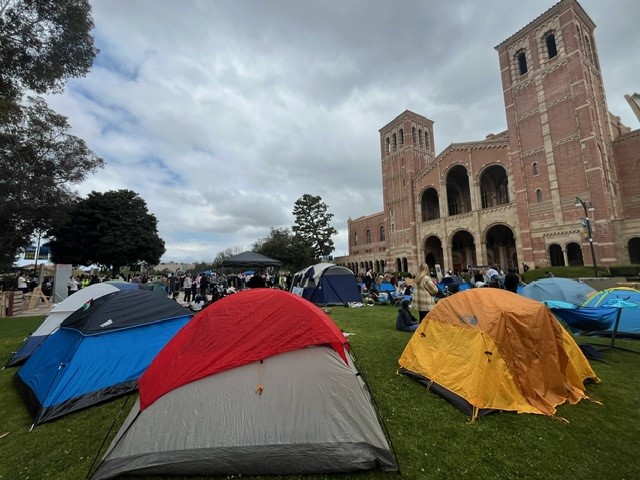As California moves deeper into its third year of drought, growers and representatives of local water districts called on Gov. Jerry Brown to proclaim a drought emergency.
It became a recurring issue at Tuesday's meeting of the California Board of Food and Agriculture.
"We are sounding the alarm on the behalf of the agriculture industry," said Craig McNamara, a walnut grower who serves as board president.
The board heard testimony from state and federal officials that many major reservoirs are now at less than 50 percent capacity. The level of Folsom Lake, down to 20 percent, has sunk so low that it revealed an island and the ruins of a 19th-century community that had been hidden for decades.
READ: Sierra Survey Finds CA Snowpack at Record Low
Snowpack measurements show it to be 20 percent normal, especially worrisome because the majority of the surface water used for irrigation comes from snowmelt runoff in spring and summer.
Late last year, the California Department of Water Resources announced an initial water allocation of only 5 percent, tying the previous low set during the drought of 2007-09.
News
Top news of the day
The west side of the San Joaquin Valley stands to be hardest hit, according to the consensus of the experts.
In the Westlands water district just west of Fresno, hundreds of square miles may have to be left fallow if there are not a series of significant storms, said Jason Peltier, chief deputy general manager.
The board has no direct authority, but advises the department and Brown. Last month he appointed a "Drought Task Force," but has declined to comment on an emergency declaration.
The governor did not attend the meeting, but Food and Agriculture Secretary Karen Ross and Department of Water Resources Director Mark Cowin, both gubernatorial appointees, were present to hear the pleas for the declaration.
READ: Prolonged Dry Weather Could Drive Up Price of Water
There was much discussion of ways to speed the approval process for transfers of previously allocated water. But that pointed to the crux of the emerging crisis.
"The bottom line is you have to have water to transfer and we're getting to a situation where there isn't much available," said Ross.
January and February historically are the months of heaviest precipitation in California. There is still hope a change in weather could reduce the impact of the dry conditions, but nothing significant appears in the forecast for the next several weeks.
Speaker after speaker likened conditions to the historic drought year of 1977.
"As we go into 2014, we're facing probably the driest situation that any of us have ever seen," said David Guy, president of the Northern California Water Assn., which represents districts in the Sacramento Valley.
In making his case, Peltier at one point read from the regulations pertaining to emergency declarations, noting that they empower the easing of restrictions otherwise in place.
Without a significant change in conditions, Cowin indicated that by the end of the month he expected his department would recommend to the governor that a drought emergency be declared.
Even though semi-arid Southern California draws much of its water from Northern California snowmelt, water supply is not as hard-pressed in the portion of the state south of the Tehachapi mountains, due largely to water stockpiled during wetter years by the Metropolitan Water District, which has significantly expanded its storage capacity in recent decades.
WATCH: LA Water in Short Supply
This was cited by several speakers as a model to be followed elsewhere in the state, where the Southland's thirst for northern water has long been a bone of contention.
The secretary of agriculture issued a plea to the entire state: "We have to double-up our commitment to conservation. We have to really be innovative with recycled water. We have to look at what are shovel ready projects that can help us store water if we get any opportunities," said Ross.
Growers who plant water-intensive summer crops still have time to decide whether to curtail spring planting. But there is an expectation that harvests will be affected in some parts of the state.
WATCH: State Water Crisis Prompts Task Force Meeting
Others may be able to make up the difference for certain crops, and Ross believes the near-term effect for California grocery shoppers will not be significant.
"But if the drought is sustained, that's where you'll see the impact," Ross said.



